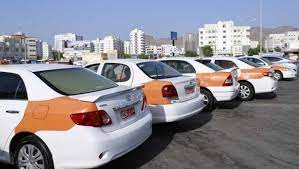
Oman, with its stunning landscapes and rich cultural oman taxi heritage, is a country that invites exploration. Whether you’re a tourist eager to experience its wonders or a resident navigating daily life, efficient transportation is essential. In Oman, taxis serve as a vital mode of transport, offering convenience and flexibility to travelers and locals alike. In this comprehensive guide, we delve into everything you need to know about Oman’s taxi services, from navigating fares to understanding the local customs associated with this mode of transportation.
Understanding Oman’s Taxi System: In Oman, taxis are readily available in urban areas, airports, and popular tourist destinations. While the country boasts modern infrastructure, including well-maintained roads, public transportation options like buses are limited in certain areas. As a result, taxis play a crucial role in filling this gap, offering door-to-door service for commuters.
Types of Taxis: In Oman, you’ll encounter different types of taxis catering to diverse preferences and budgets. The most common types include:
- Regular Taxis: These are typically sedan cars painted in distinctive colors such as white, orange, or yellow, depending on the city. They are metered, providing transparency in fare calculation based on distance traveled.
- Luxury Taxis: For travelers seeking added comfort and style, luxury taxis are available in Oman. These vehicles often include high-end sedans or SUVs, offering amenities such as leather seats and superior comfort. Luxury taxis usually come with higher fares compared to regular taxis.
- Airport Taxis: At major airports like Muscat International Airport, dedicated taxi services are available to facilitate seamless transportation for arriving passengers. These taxis operate on a fixed fare basis, with rates displayed prominently at designated taxi stands.
Booking Options: While hailing a taxi on the street is common in Oman, travelers can also opt for alternative booking methods for added convenience. Many taxi companies offer smartphone apps that allow users to request rides, track their vehicle’s location, and make cashless payments. This option is particularly convenient for travelers who prefer to plan their journeys in advance or avoid language barriers when communicating with drivers.
Navigating Fare Structures: Oman’s taxi fares are regulated by local authorities to ensure fairness and transparency. Fare structures typically include a base fare, which covers the initial distance traveled, followed by incremental charges based on distance or time. Additionally, surcharges may apply during peak hours, late-night travels, or for rides to remote locations.
Tips for Using Taxis in Oman: To make the most of your taxi experience in Oman, consider the following tips:
- Confirm the Fare: Before embarking on your journey, it’s advisable to confirm the fare with the driver, especially for longer trips or rides to unfamiliar destinations.
- Carry Cash: While some taxis accept credit cards or mobile payments, cash remains the most widely accepted form of payment in oman taxi. Ensure you have sufficient local currency to cover your fare.
- Respect Local Customs: In Oman, it’s customary to greet the driver with a polite greeting such as “Salaam” (peace) or “As-salamu alaykum” (peace be upon you). Maintaining a respectful demeanor fosters positive interactions with drivers.
Conclusion: Oman’s taxi services offer a convenient and reliable means of transportation for travelers and residents alike. By understanding the nuances of the local taxi system, navigating fares, and adhering to cultural customs, you can make the most of your journey while exploring the breathtaking landscapes and vibrant culture that Oman has to offer. Whether you’re venturing into bustling cities or remote villages, taxis remain a steadfast companion in your exploration of this enchanting country.
